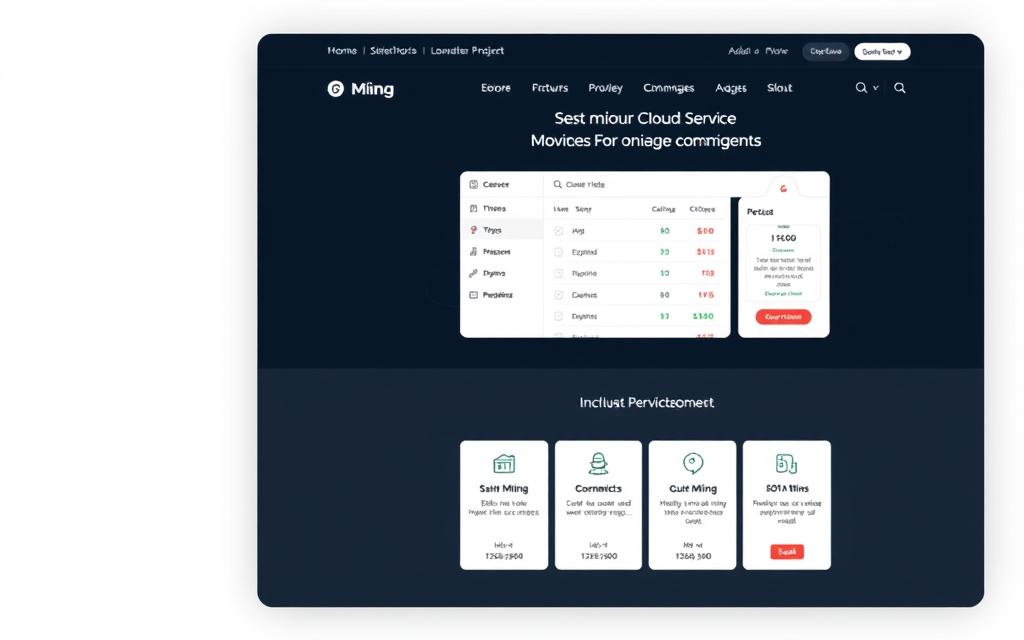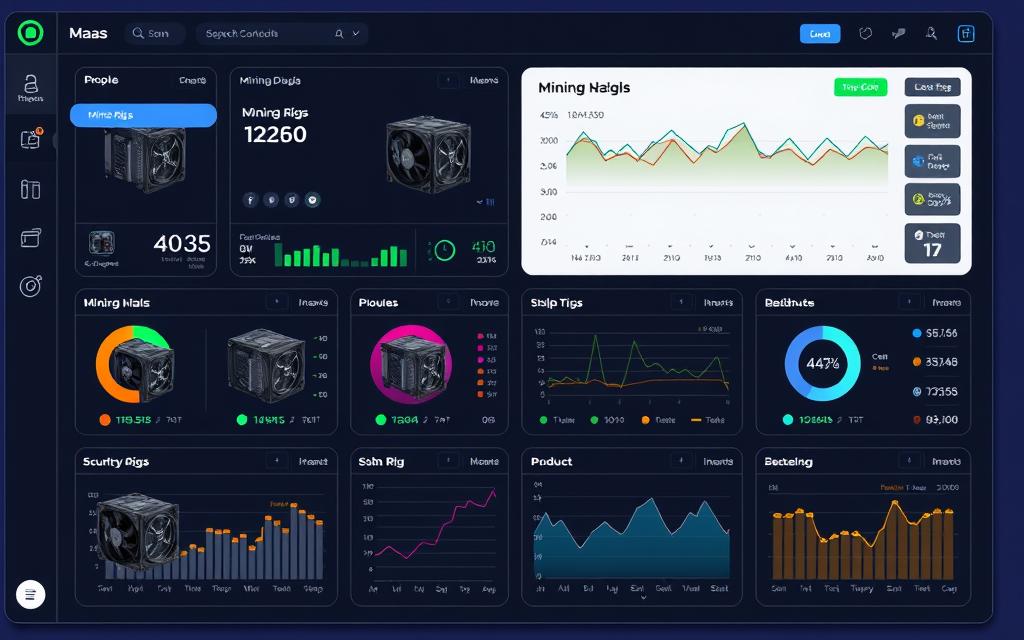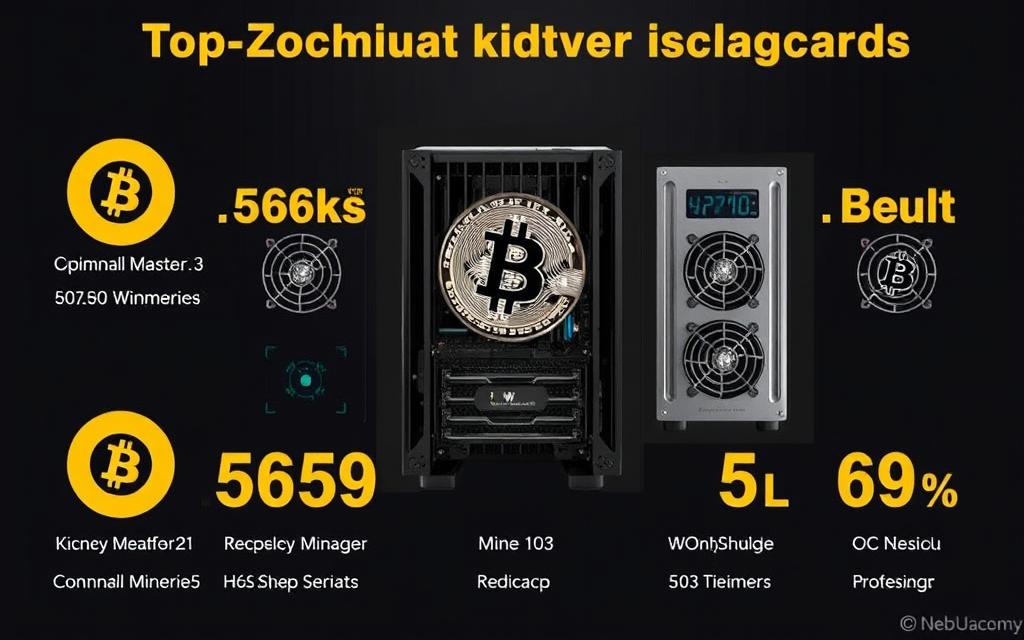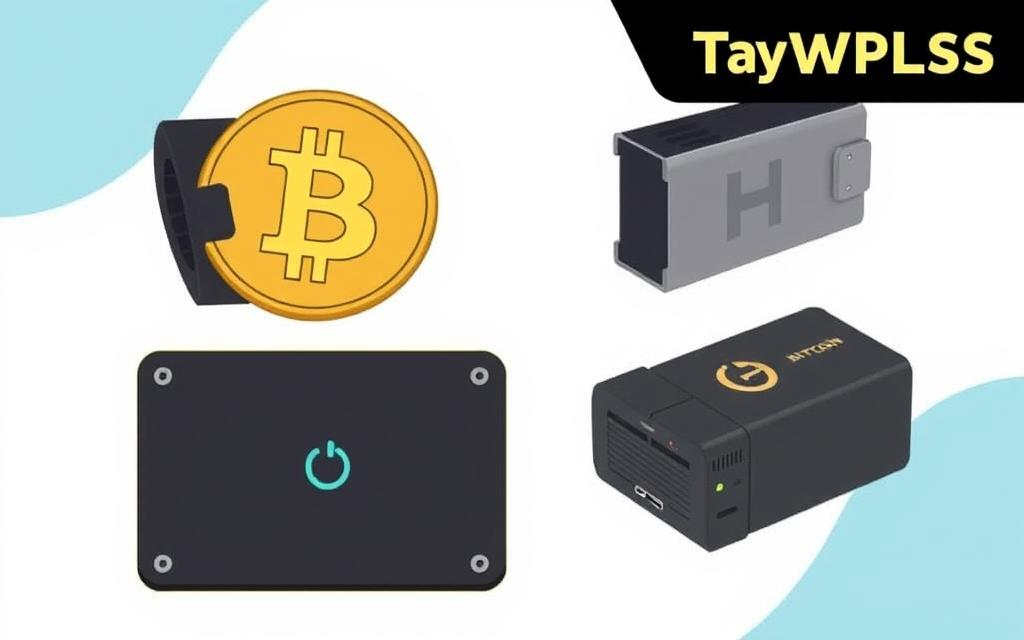Table of Contents
The legitimacy of Bitcoin mining as an investment opportunity has been a topic of debate. As a complex process, it involves verifying transactions on the cryptocurrency network and adding them to the public ledger, known as the blockchain.
To understand whether this investment platform is viable, it’s crucial to examine the process, equipment requirements, and the role of miners. Initial investment costs and potential returns will also be analyzed to provide a clear picture of the financial realities involved.
By exploring the economics of mining operations and addressing common misconceptions, this article aims to provide factual information, helping readers make informed decisions about their involvement in this money-making venture.
Understanding Bitcoin Mining: The Fundamentals
The process of Bitcoin mining is fundamental to the operation of the Bitcoin network, providing a secure and transparent way to record transactions on the blockchain. Bitcoin mining is the backbone of the Bitcoin network, where miners verify transactions and secure the blockchain by solving complex mathematical puzzles. This process ensures that Bitcoin remains decentralized and resistant to fraud. In return, miners are rewarded with Bitcoin, providing a financial incentive for their work.
What Is Bitcoin Mining and How Does It Work?
Bitcoin mining is the process of validating transactions and adding them to the blockchain through complex computational problem-solving. Miners compete to solve these mathematical puzzles, which require significant computational power. The first miner to solve the puzzle gets to add a new block of transactions to the blockchain and is rewarded with newly minted Bitcoins. This proof-of-work mechanism is crucial for maintaining the security and integrity of the Bitcoin network.
The mining process involves several key components, including hashing algorithms, block rewards, and the mining difficulty adjustment. The hashing algorithm used by Bitcoin is designed to be collision-resistant, making it virtually impossible to alter the blockchain without being detected. The block reward incentivizes miners to continue validating transactions and securing the network.
The Role of Miners in the Bitcoin Ecosystem
Miners play a critical role in maintaining the Bitcoin ecosystem by securing the network, verifying transactions, and contributing to the decentralized nature of the platform. By solving complex mathematical puzzles, miners ensure that transactions are processed in a secure and orderly manner, preventing any single entity from controlling the network.
The role of miners is multifaceted. Not only do they validate transactions, but they also participate in the decentralized governance of the Bitcoin network. Miners signal their support for proposed changes to the protocol, helping to ensure that the network remains adaptable and resilient.
Mining Hardware and Requirements
To mine Bitcoin successfully, you need specialized hardware known as mining rigs. These machines are designed to perform millions of calculations per second to solve the puzzles required for mining. The evolution of mining hardware has seen a shift from CPU mining to GPU mining, and finally to the use of specialized ASIC miners, which are now necessary to mine Bitcoin profitably.
Setting up a mining operation requires careful consideration of several factors, including hardware specifications, electricity needs, cooling systems, and internet connectivity. Miners must balance the need for high computational power with the costs associated with running and maintaining their equipment.
Is Bitcoin Mining Legit? Separating Facts from Fiction
Bitcoin mining, the process that underpins the Bitcoin network, is often misunderstood and subject to misconceptions about its legitimacy. As a crucial component of the cryptocurrency ecosystem, understanding the legitimacy of Bitcoin mining is essential for anyone looking to invest or participate in this space.
The Legitimacy of Bitcoin Mining as a Concept
Bitcoin mining is a legitimate and necessary function within the cryptocurrency ecosystem. It enables the blockchain to operate securely and maintains the decentralized nature of the network. Miners verify transactions and create new blocks, which are then added to the blockchain. This process is fundamental to the operation of Bitcoin and other cryptocurrencies that use a similar proof-of-work consensus mechanism.
The legitimacy of Bitcoin mining is rooted in its role in securing the network and verifying transactions. Without miners, the Bitcoin network would be vulnerable to attacks and unable to process transactions. The decentralized nature of mining, where anyone with the appropriate hardware and software can participate, further reinforces its legitimacy.

Common Misconceptions About Bitcoin Mining
Despite its legitimacy, Bitcoin mining is surrounded by misconceptions that can deter potential investors or participants. One common myth is that Bitcoin mining is overly harmful to the environment due to its energy consumption. While it’s true that mining consumes significant amounts of energy, the narrative is more nuanced. Efforts are underway to make mining more sustainable, including the use of renewable energy sources.
Another misconception is that Bitcoin mining is associated with illegal activities. While it’s true that some illicit platforms have used Bitcoin, the transparent nature of the blockchain makes it difficult to use for large-scale illegal activities without detection. Legitimate mining operations are transparent and comply with legal requirements.
Legal Status of Bitcoin Mining Around the World
The legal status of Bitcoin mining varies significantly around the world. In some countries, it’s explicitly legal and even encouraged as a form of economic activity. For example, countries like the United States, Canada, and Iceland have clear regulations or have shown a willingness to accommodate mining operations.
Conversely, some countries have restricted or banned Bitcoin mining due to concerns over energy consumption, financial regulation, or the potential for money laundering. Understanding the legal landscape is crucial for anyone considering investing in or starting a mining operation.
In conclusion, Bitcoin mining is a legitimate activity that plays a critical role in the cryptocurrency ecosystem. While misconceptions and varying legal statuses present challenges, they do not undermine the fundamental legitimacy of the practice. As the cryptocurrency space continues to evolve, it’s likely that the understanding and regulation of Bitcoin mining will also continue to develop.
The Economics of Bitcoin Mining
Bitcoin mining’s economic landscape is complex, involving significant upfront costs and ongoing expenses. To navigate this landscape effectively, it’s essential to understand the various factors that influence the profitability of mining operations.
Initial Investment Costs
The initial investment in Bitcoin mining is substantial, primarily due to the cost of specialized hardware known as Application-Specific Integrated Circuits (ASICs). These devices are designed specifically for Bitcoin mining and offer significantly higher hash rates than traditional computer hardware. The cost of ASICs can vary widely depending on their processing power, efficiency, and brand. For instance, top-tier mining rigs can cost several thousand dollars, making the initial investment considerable.
In addition to the cost of mining hardware, other initial expenses include:
- Setting up a suitable mining environment, which may involve constructing or renovating a facility.
- Investing in adequate cooling systems to prevent overheating.
- Acquiring necessary electrical infrastructure to support the high power requirements of mining operations.
Ongoing Expenses: Electricity, Maintenance, and Cooling
Ongoing expenses are a critical factor in the economics of Bitcoin mining. The most significant of these expenses is typically electricity, as mining operations consume large amounts of power. The cost of electricity varies by location, making it essential for miners to choose sites with low electricity costs to maximize profitability. Maintenance fees are another ongoing expense, as mining equipment requires regular upkeep to ensure optimal performance and longevity.
Cooling systems are also a necessary expense, as they prevent mining equipment from overheating. The cost of cooling can be substantial, especially in warmer climates or during hot seasons. Miners often explore innovative cooling solutions, such as immersion cooling or using natural cooling methods, to reduce these costs.
Calculating Potential Returns and Break-Even Points
Calculating potential returns from Bitcoin mining involves several key factors: the hash rate of the mining equipment, the current difficulty of the Bitcoin network, the price of Bitcoin, and the impact of halving events on mining rewards. Miners must also consider their ongoing expenses, including electricity and maintenance costs, to determine their net returns.
The break-even point is the time it takes for a mining operation to recoup its initial investment. This calculation is crucial for miners, as it helps them understand the viability of their investment. Factors influencing the break-even point include the initial cost of hardware, ongoing expenses, and the revenue generated from mining.
Mining Profitability in Different Market Conditions
Mining profitability can fluctuate significantly under different market conditions. During bull markets, when the price of Bitcoin is high, mining can be highly profitable. Conversely, during bear markets, the rewards may not cover operational costs, making mining less viable.
To maintain profitability, miners must be able to adjust their strategies in response to changing market conditions. This might involve upgrading to more efficient hardware, relocating to areas with lower electricity costs, or temporarily shutting down operations during periods of low profitability.
In conclusion, the economics of Bitcoin mining is a complex and multifaceted field that requires careful consideration of various factors, from initial investment costs to ongoing expenses and market conditions. By understanding these elements, miners can make informed decisions to maximize their profitability in the ever-changing landscape of Bitcoin mining.
Bitcoin Mining Methods: Solo, Pool, and Cloud Mining
The landscape of Bitcoin mining is diverse, with multiple approaches available, including solo mining, pool mining, cloud mining, and Mining-as-a-Service platforms. Each method caters to different levels of technical expertise, investment capacity, and risk tolerance.
Solo Mining: Pros, Cons, and Viability
Solo mining involves individuals attempting to mine Bitcoin blocks independently, relying solely on their own computational power. This method was more viable in Bitcoin’s early days when the network was less congested and the difficulty level was lower.
Pros: Solo miners have complete control over their mining operations and rewards. They don’t have to share their earnings with anyone.
Cons: The chances of successfully mining a block are extremely low due to the high competition and the immense computational power required.
Pool Mining: How It Works and Popular Options
Pool mining allows miners to combine their computational resources, increasing their collective chances of solving complex mathematical equations and earning Bitcoin rewards. These rewards are then distributed among pool members based on their contributed hash power.
Advantages: Pool mining provides a more consistent income stream compared to solo mining. Miners can rely on regular payouts based on their contribution to the pool’s overall hash rate.
Popular Options: Some of the well-known mining pools include Slush Pool, Antpool, and F2Pool. These pools have established reputations and offer competitive fees.
Cloud Mining Services
Cloud mining services offer an alternative for those who wish to mine Bitcoin without directly managing the hardware. These services provide mining contracts that allow customers to rent mining power from a provider.
Legitimate Services: Companies like Genesis Mining and Hashflare have offered cloud mining services, allowing users to participate in mining without the need for technical expertise or significant upfront hardware costs.
Risks: The cloud mining industry has seen numerous scams, making it crucial for potential investors to conduct thorough research and due diligence before committing to any service.

Mining-as-a-Service Platforms
Mining-as-a-Service (MaaS) platforms handle the technical aspects of mining operations, allowing customers to invest in mining power without directly managing hardware or software.
Benefits: MaaS platforms simplify the mining process, making it accessible to those without extensive technical knowledge. Investors can focus on the financial aspects without worrying about the operational details.
Fee Structures: These platforms typically charge fees based on the mining power rented or the revenue generated. Understanding the fee structure is crucial for evaluating the potential returns on investment.

Common Bitcoin Mining Scams to Avoid
As the popularity of Bitcoin continues to soar, so does the prevalence of scams targeting unsuspecting investors in the cryptocurrency mining space. It’s crucial for potential investors to be aware of the common scams that can lead to significant financial losses.
Fake Cloud Mining Operations
One of the most prevalent scams in the Bitcoin mining sector is fake cloud mining operations. These scams involve platforms that claim to offer cloud mining services, promising high returns on investment with minimal effort required from the investor. However, in many cases, these platforms are fraudulent and do not actually own or operate any mining equipment.
Scammers often use convincing websites and marketing materials to make their operations appear legitimate. They may even provide fake mining statistics or testimonials from supposed satisfied customers. To avoid falling victim to these scams, it’s essential to thoroughly research any cloud mining platform before investing.
Red flags to watch out for:
- No clear information about the company or its team
- Unrealistic promises of high returns with little risk
- Lack of transparency about mining operations
- Poor website design or numerous grammatical errors

Fraudulent Mining Equipment Sales
Another common scam in the Bitcoin mining space involves the sale of fraudulent or non-existent mining equipment. Scammers may sell outdated, inefficient, or even non-functional mining hardware to unsuspecting investors. In some cases, they may not even deliver any hardware at all, simply taking the investor’s money.
To avoid this type of scam, it’s crucial to purchase mining equipment from reputable manufacturers or authorized resellers. Be wary of deals that seem too good to be true, and always research the seller thoroughly before making a purchase.
Tips for avoiding equipment scams:
- Research the manufacturer and read reviews from other customers
- Verify the authenticity of the product and check for any certifications
- Be cautious of extremely low prices or “limited-time offers”
- Use secure payment methods that offer some level of buyer protection
Ponzi Schemes Disguised as Mining Operations
Ponzi schemes are a type of investment scam where returns are paid to existing investors from funds contributed by new investors, rather than from profit earned. In the context of Bitcoin mining, these schemes often involve platforms that claim to offer high-yield mining investments.
To identify a Ponzi scheme disguised as a mining operation, look for warning signs such as:
- Guaranteed high returns, regardless of market conditions
- Pressure to recruit new investors
- Lack of transparency about the mining process
- Complex fee structures or hidden charges
Warning Signs of Mining Scams
While specific scams may vary, there are common warning signs that can indicate a potential scam. Being aware of these signs can help protect your investment and wallet from scammers.
Common warning signs include:
- Promises of unusually high returns or guaranteed profits
- Pressure tactics to invest quickly
- Lack of clear information about the company or its operations
- Unrealistic promises about the potential of mining
- Poor communication or unresponsive customer service
To protect yourself from these scams, it’s essential to conduct thorough due diligence on any mining investment opportunity. This includes researching the company, verifying the legitimacy of their operations, and being cautious of any red flags.
By staying informed and vigilant, you can minimize your risk of falling victim to Bitcoin mining scams and make more informed decisions about your investments in the cryptocurrency space.
The Environmental Impact of Bitcoin Mining
The cryptocurrency industry is under scrutiny for the environmental effects of Bitcoin mining. As the world’s most popular cryptocurrency continues to grow in value and adoption, concerns about its ecological footprint have become increasingly pressing.
Energy Consumption Concerns
One of the most significant environmental concerns surrounding Bitcoin mining is its substantial energy consumption. The process of validating transactions and creating new Bitcoins requires powerful computer hardware that consumes large amounts of electricity. According to some estimates, Bitcoin mining operations worldwide consume more energy than some small countries. This has led to criticism that Bitcoin mining is not only contributing to greenhouse gas emissions but also straining local energy resources.
The energy consumption of Bitcoin mining is not just a matter of the amount of electricity used but also the source of that energy. When mining operations rely on fossil fuels, their carbon footprint is significantly higher than when they use renewable energy sources. This distinction is crucial in understanding the overall environmental impact of Bitcoin mining.

Sustainable Mining Practices and Renewable Energy
In response to growing environmental concerns, many Bitcoin mining operations are turning to sustainable practices and renewable energy sources. Hydroelectric, solar, and wind power are becoming increasingly popular among miners due to their lower carbon footprint and, in many cases, lower operational costs. For instance, some mining companies are setting up operations near hydroelectric dams, where excess energy can be utilized efficiently.
“The use of renewable energy in Bitcoin mining not only reduces the environmental impact but also provides a more sustainable and cost-effective solution for miners.” – Industry Expert
The adoption of renewable energy sources is not only beneficial for the environment; it also makes economic sense for mining operations. Renewable energy can often be cheaper than traditional fossil fuels, especially in regions with abundant natural resources like sunlight or wind. This economic incentive is driving more miners to adopt greener practices.
The Shift Toward Greener Mining Solutions
Beyond the use of renewable energy, the Bitcoin mining industry is witnessing a shift toward more energy-efficient mining hardware and innovative cooling solutions. Modern mining rigs are designed to be more powerful while consuming less electricity, directly addressing one of the primary environmental concerns associated with mining.
Innovations such as immersion cooling and waste heat recovery systems are also gaining traction. These technologies not only reduce the energy required for cooling mining equipment but also provide additional benefits, such as utilizing the waste heat for other purposes, thereby increasing overall efficiency.
As the industry continues to evolve, the integration of sustainable practices and greener technologies is expected to play a crucial role in mitigating the environmental impact of Bitcoin mining. While challenges remain, the progress being made toward more sustainable mining operations is a positive step forward for the cryptocurrency industry as a whole.
Setting Up a Legitimate Bitcoin Mining Operation
Setting up a legitimate Bitcoin mining operation involves several key steps, from selecting the appropriate hardware to ensuring the security of your mining setup. A well-planned operation is crucial for maximizing returns on your investment.
Selecting the Right Hardware
Choosing the right hardware is the first step in establishing a successful Bitcoin mining operation. The most critical component is the ASIC (Application-Specific Integrated Circuit) miner, which is designed specifically for Bitcoin mining.
When selecting an ASIC miner, consider factors such as hash rate, energy efficiency, and price-to-performance ratio. A higher hash rate increases your chances of solving the complex mathematical equations required for mining, while energy efficiency helps reduce operational costs.

Creating an Optimal Mining Environment
Creating an optimal mining environment is crucial for the longevity and efficiency of your mining equipment. Whether you’re mining at home or in a dedicated facility, several factors need to be considered.
Proper ventilation is essential to prevent overheating, which can damage your equipment. Temperature control is also vital; most mining equipment operates best between 60°F to 75°F (15°C to 24°C).
Noise management is another consideration, especially for home mining operations. Soundproofing or placing miners in a noise-reducing enclosure can help mitigate this issue.
Electrical safety is paramount. Ensure that your wiring and electrical infrastructure can handle the load of your mining operation to prevent fires or other hazards.
Joining Reputable Mining Pools
Mining pools allow individual miners to combine their resources, increasing their chances of solving blocks and earning rewards. When selecting a mining pool, several factors should be considered.
Pool fees, payout methods, and minimum payout thresholds are critical considerations. Some pools offer additional features like merged mining or detailed statistics.

The reliability and reputation of the pool are also crucial. Look for pools with a strong track record and transparent operations.
Security Considerations for Miners
Securing your mining operation is vital to protect your investment. This includes both physical security for your equipment and cybersecurity measures to safeguard your digital assets.
Use strong passwords, enable two-factor authentication where possible, and keep your mining software and firmware up to date.
Regularly back up your wallet information and consider using a hardware wallet for added security.
Implementing robust network security measures, such as firewalls and intrusion detection systems, can help protect against cyber threats.
Mobile Mining: Can You Mine Bitcoin on Your Phone?
The concept of mining Bitcoin on a smartphone may seem appealing, but it’s crucial to understand the limitations and realities of mobile mining. As cryptocurrency continues to gain popularity, the idea of using mobile devices for mining has sparked both interest and concern.
The Reality of Mobile Mining
Mobile mining, in the context of Bitcoin, is not practical or effective. Smartphones lack the computational power required for profitable mining. The hardware is not designed to handle the intense calculations needed for cryptocurrency mining, and attempting to do so could potentially damage the device.
Key Limitations of Mobile Mining:
- Insufficient computational power
- Potential for device damage
- Inefficient energy consumption
Despite these limitations, some apps claim to enable mobile Bitcoin mining. However, these are often misleading or outright scams designed to deceive users.

Mobile Mining Apps: Legitimate Tools vs. Scams
Not all mobile mining apps are created equal. While some may claim to offer mining services, many are scams designed to steal money or waste resources. It’s essential to distinguish between legitimate monitoring tools and fraudulent applications.
Red Flags for Scam Apps:
- Unrealistic promises of high returns
- Lack of transparency about operations
- Poor user reviews and ratings
| App Feature | Legitimate Apps | Scam Apps |
|---|---|---|
| Transparency | Clear about operations | Lack transparency |
| Returns | Realistic expectations | Promise unusually high returns |
| User Reviews | Positive, constructive feedback | Negative, complaining reviews |
Alternative Ways to Use Mobile Devices in Mining
While direct mining on smartphones is not viable, there are alternative ways to utilize mobile devices in the mining ecosystem. Many platforms offer mobile apps that allow users to monitor their mining operations remotely, track performance, and receive updates.
Legitimate Uses of Mobile Devices:
- Monitoring mining rig performance
- Managing mining pool accounts
- Tracking earnings and updates
By understanding the limitations and potential uses of mobile devices in cryptocurrency mining, users can make informed decisions about their involvement in the mining process.
Professional Bitcoin Mining Services and Companies
Professional Bitcoin mining services have become an attractive option for those seeking to engage in cryptocurrency mining without the complexities of managing their own operations. These services allow investors to participate in the Bitcoin mining process by leveraging the provider’s infrastructure and expertise.
Evaluating Mining Service Providers
When selecting a professional Bitcoin mining service, it’s crucial to evaluate the provider based on several key factors. These include the company’s history, the technology they use, their energy sourcing practices, and the transparency of their operations.
A reputable mining service provider should have a clear and transparent business model, outlining how they operate, their fee structures, and the services they offer. Investors should look for companies that use state-of-the-art mining equipment and have a robust infrastructure in place to support their operations.
The energy consumption of mining operations is another critical factor to consider. With the increasing focus on sustainability, companies that utilize renewable energy sources are likely to be more attractive to environmentally conscious investors.
Managed Mining Operations
Managed mining operations refer to the practice where a mining service provider manages the mining process on behalf of the investor. This includes setting up and maintaining the mining equipment, managing energy consumption, and ensuring the security of the operation.
The fee structures for managed mining operations can vary significantly between providers. Some may charge a flat fee, while others may take a percentage of the mined Bitcoin. It’s essential for investors to understand the fee structure and how it impacts their potential returns on investment.
Contract terms are another vital aspect to consider. Investors should carefully review the contract to understand the duration of the agreement, any penalties for early termination, and the service level agreements (SLAs) in place.
Due Diligence Before Investing in Mining Services
Before investing in any mining service, conducting thorough due diligence is paramount. This involves researching the company’s history, verifying their mining facilities, and analyzing customer reviews and testimonials.
Investors should also look into the company’s financial transparency, including how they report their earnings and expenses. A transparent company will provide regular updates on their operations and financial performance.
It’s also advisable to check if the company is compliant with relevant regulations and laws in their jurisdiction. This can help mitigate the risk of investing in a company that may face legal challenges in the future.
By carefully evaluating mining service providers, understanding managed mining operations, and conducting thorough due diligence, investors can make informed decisions when investing in professional Bitcoin mining services.
Bitcoin Mining vs. Other Cryptocurrency Mining
The cryptocurrency mining sector is not a one-size-fits-all industry; Bitcoin mining differs significantly from other cryptocurrency mining in terms of technology, investment, and returns. As the cryptocurrency landscape continues to evolve, understanding these differences is crucial for miners and investors looking to maximize their returns.
Comparing Mining Processes Across Different Cryptocurrencies
Cryptocurrencies employ various consensus mechanisms, with proof-of-work (PoW) being the most common for mining. Bitcoin, for instance, uses PoW, requiring significant computational power to solve complex mathematical puzzles. Other cryptocurrencies, however, may use proof-of-stake (PoS) or other consensus mechanisms that don’t require mining.
The mining process for cryptocurrencies that use PoW can vary significantly. For example, Bitcoin’s mining process is highly competitive and requires specialized hardware known as ASICs (Application-Specific Integrated Circuits). In contrast, some altcoins can still be mined using GPUs (Graphics Processing Units), making them more accessible to individual miners.

| Cryptocurrency | Consensus Mechanism | Mining Hardware |
|---|---|---|
| Bitcoin | Proof-of-Work | ASIC |
| Ethereum | Proof-of-Work (planned PoS) | GPU |
| Litecoin | Proof-of-Work | ASIC/GPU |
Profitability Comparison: Bitcoin vs. Altcoin Mining
The profitability of mining different cryptocurrencies depends on several factors, including network difficulty, block rewards, coin value, and market liquidity. Bitcoin, being the most established cryptocurrency, generally offers a more stable source of income for miners due to its high market value and liquidity.
Altcoin mining, on the other hand, can be more volatile. While some altcoins may offer higher block rewards or faster block times, their market value can fluctuate significantly, affecting the overall profitability of mining these coins.
- Network Difficulty: Affects how hard it is to mine a particular cryptocurrency.
- Block Rewards: The amount of cryptocurrency awarded to miners for solving a block.
- Coin Value: The market value of the cryptocurrency being mined.
- Market Liquidity: How easily mined coins can be sold or exchanged.
Diversification Strategies for Crypto Miners
Diversifying a mining operation across multiple cryptocurrencies can help mitigate risks associated with market volatility and network difficulty changes. Miners can choose to mine different cryptocurrencies based on their hardware capabilities and market conditions.
For instance, miners with GPU rigs can easily switch between different GPU-minable cryptocurrencies, allowing them to take advantage of the most profitable options at any given time. In contrast, miners using ASICs are more limited in their ability to switch between different cryptocurrencies, as ASICs are typically designed for a specific algorithm.
To make informed decisions, miners should consider factors like mining difficulty trends, upcoming protocol changes, and wallet compatibility when evaluating different cryptocurrencies for mining.
The Future of Bitcoin Mining
Bitcoin mining, a critical component of the cryptocurrency ecosystem, is on the cusp of a new era characterized by advancements in technology, changes in mining economics, and evolving legal frameworks. As the backbone of the Bitcoin network, mining plays a vital role in transaction verification and network security. The future of this industry is being shaped by several key factors that will influence its trajectory in the coming years.
Technological Advancements in Mining Equipment
The technology behind Bitcoin mining has evolved significantly since its inception. Modern mining operations rely on Application-Specific Integrated Circuit (ASIC) miners, which have become increasingly sophisticated. Advancements in ASIC design have led to more efficient and powerful mining rigs, capable of performing complex calculations at higher speeds while consuming less energy.
One of the most significant technological developments in recent years is the introduction of immersion cooling systems. This innovative cooling method involves submerging mining equipment in a non-conductive liquid to efficiently dissipate heat. Immersion cooling not only reduces the energy required for cooling but also allows for more compact mining operations, potentially changing the landscape of mining facilities.
The potential impact of quantum computing on Bitcoin mining is another area of interest. While still in its early stages, quantum computing could potentially disrupt the cryptographic foundations of Bitcoin and other cryptocurrencies. However, the Bitcoin community is actively exploring quantum-resistant algorithms to mitigate this risk.

The Impact of Bitcoin Halving Events
Bitcoin halving events, which occur approximately every four years, have a significant impact on the mining ecosystem. During a halving event, the block reward for miners is reduced by half, directly affecting their revenue. Historically, these events have led to increased mining consolidation, as smaller, less efficient operations may struggle to remain profitable.
The economic implications of halving events are multifaceted. On one hand, the reduction in supply can lead to an increase in Bitcoin’s value, potentially offsetting the reduced block reward for miners. On the other hand, the immediate impact is a decrease in mining revenue, which can lead to industry consolidation and the closure of less efficient mining operations.
Future halving events are expected to continue shaping the mining landscape. As the block reward decreases, transaction fees will become an increasingly important component of miners’ revenue. This shift may lead to changes in how miners prioritize transactions and could potentially impact the overall security and efficiency of the Bitcoin network.
Regulatory Developments and Their Implications
The regulatory environment for Bitcoin mining is evolving rapidly across the globe. Governments and regulatory bodies are increasingly scrutinizing mining operations due to concerns over energy consumption, environmental impact, and potential money laundering activities.
Regulatory developments can have far-reaching implications for the mining industry. Some countries are implementing restrictions on mining activities, citing environmental concerns or the need to control energy consumption. For instance, China has previously imposed strict regulations on mining, leading to a significant shift in global mining distribution.
On the other hand, some regions are embracing Bitcoin mining, recognizing its potential economic benefits. These areas are developing incentives for miners, such as low energy costs or tax breaks, to attract mining operations. This has led to a redistribution of mining activities across different platforms and geographies.
As regulatory landscapes continue to evolve, miners must adapt to new requirements and potential restrictions. This may involve relocating operations to more favorable jurisdictions or investing in more energy-efficient technologies to comply with environmental regulations.
In conclusion, the future of Bitcoin mining is being shaped by technological advancements, economic factors related to halving events, and evolving regulatory environments. As the industry continues to mature, miners and investors must stay informed about these developments to navigate the changing landscape successfully.
How to Protect Yourself from Cryptocurrency Scams
The rise of cryptocurrency has led to an increase in scams, making it crucial for individuals to understand how to protect themselves. As the popularity of cryptocurrency grows, so does the sophistication of scammers, making it essential for investors to be vigilant.
Conducting Proper Due Diligence
Before investing in any cryptocurrency mining opportunity or platform, it’s vital to conduct thorough due diligence. This involves researching the company’s background, understanding their mining operations, and verifying their legitimacy. Look for reviews, check for any scam warnings online, and ensure they provide clear information about their operations.
Verify the platform’s transparency regarding their mining processes and fees. A legitimate company will be open about their operations and provide detailed information about their mining equipment and energy consumption.
Recognizing Red Flags in Mining Opportunities
Being able to identify red flags is crucial in avoiding cryptocurrency scams. Some common warning signs include guaranteed returns, pressure tactics to invest quickly, lack of transparency about operations, and requests for personal information or wallet access. Be cautious of opportunities that seem too good to be true or promise unusually high returns with little risk.
It’s also important to be wary of unsolicited investment opportunities, especially those received through social media or messaging apps. Always verify the legitimacy of the investment and the company before making any payments.
Secure Storage for Mined Bitcoin
Once you’ve mined Bitcoin, it’s crucial to store it securely. Consider using hardware wallets, which are physical devices that store your private keys offline, reducing the risk of hacking. Cold storage techniques, where your cryptocurrency is stored offline, are also effective. Implement robust security protocols to protect your digital assets, including using strong passwords and enabling two-factor authentication.

Resources for Verifying Mining Operations
To verify the legitimacy of mining operations, utilize blockchain explorers to track transactions and mining pool statistics to understand the pool’s performance. Check company registries to confirm the company’s registration and standing. Engage with community forums where investors share their experiences and insights.
Staying informed and doing your research can significantly reduce the risk of falling victim to cryptocurrency scams. By being proactive and cautious, you can protect your investments and navigate the cryptocurrency market more safely.
Real-World Success Stories and Cautionary Tales
As the Bitcoin mining landscape continues to evolve, examining real-world success stories and cautionary tales can provide crucial insights for miners and investors alike. The journey of Bitcoin miners offers a fascinating glimpse into the highs and lows of cryptocurrency mining, with valuable lessons to be learned from both triumphs and failures.
Profiles of Successful Bitcoin Miners
Successful Bitcoin miners have built sustainable operations by employing a range of strategies and adapting to changing market conditions on various platforms. For instance, some miners have diversified their operations across multiple mining pools and locations to mitigate risks and maximize returns. Others have invested heavily in cutting-edge hardware to stay competitive.
One notable example is a miner who started with a modest investment in basic hardware but gradually scaled up their operation as they gained experience and returns on their initial investment. By reinvesting their profits and optimizing their mining setup, they were able to significantly increase their value over time.
Another success story involves a company that developed a proprietary mining platform, allowing them to achieve higher efficiency and lower operational costs compared to their competitors. Their strategic approach to managing money flows and wallet performance enabled them to maintain a strong financial position even during periods of market volatility.

Lessons Learned from Mining Failures
Despite the successes, there are numerous cautionary tales in the world of Bitcoin mining. Many miners have faced significant financial losses due to miscalculations, unforeseen obstacles, or failure to adapt to changing market conditions. A common mistake among novice miners is underestimating the investment required for successful mining, including the cost of hardware, electricity, and maintenance.
Some miners have also fallen victim to scams or fraudulent company practices, highlighting the importance of thorough due diligence when selecting a mining platform or partner. Others have struggled with managing their wallet and securing their mined Bitcoin, leading to losses due to theft or mismanagement.
For example, a miner who failed to diversify their operation and relied heavily on a single mining pool suffered significant losses when the pool experienced technical difficulties. This incident underscores the need for miners to have contingency plans in place and to stay informed about the latest developments in the industry.
Read more about a crypto millionaire’s mining journey and the challenges they faced in their mining journey.
Expert Insights from Industry Veterans
Industry veterans offer valuable insights into the evolution of Bitcoin mining and the factors that distinguish successful miners from those who struggle. According to experts, the key to success lies in a combination of strategic planning, adaptability, and a deep understanding of the market dynamics.
One veteran miner emphasized the importance of staying up-to-date with the latest technological advancements and being prepared to adjust one’s strategy as needed. They also highlighted the need for a robust risk management framework to protect against potential losses and ensure long-term sustainability.
Another expert noted that the ability to manage money flows effectively and make informed decisions about investment in new hardware or other opportunities is crucial for maintaining a competitive edge. By leveraging their experience and knowledge, successful miners can navigate the complexities of the Bitcoin mining industry and achieve their goals.
Bitcoin Mining for Beginners: Getting Started Safely
Embarking on a Bitcoin mining venture as a beginner demands careful planning and education. Bitcoin mining is a complex process that involves validating transactions on the Bitcoin network and adding them to the public ledger, known as the blockchain. As a beginner, understanding the fundamentals of this process is crucial before investing time and money.
Essential Knowledge Before You Begin
Before diving into Bitcoin mining, it’s essential to grasp some fundamental concepts. First, understanding the blockchain and how it works is vital. The blockchain is a decentralized ledger that records all Bitcoin transactions. Mining is the process of validating these transactions and grouping them into blocks, which are then added to the blockchain.
Another critical aspect is the economics of mining. This includes understanding the costs involved, such as hardware and electricity expenses, and the potential returns on investment. Beginners should also be aware of the competitive nature of mining and the challenges of staying profitable.
Low-Risk Entry Points for New Miners
For those looking to start mining without significant upfront costs, there are several low-risk options. One approach is to start with a small-scale home mining setup. This could involve purchasing a used or entry-level mining rig and joining a reputable mining pool. Another option is to explore cloud mining services, which allow users to rent mining hardware and receive a portion of the mined cryptocurrency.
Fractional ownership in mining operations is another viable option. This involves investing in a portion of a larger mining operation through a platform that offers such services. It’s a way to participate in mining without directly managing the hardware.
Educational Resources and Communities
To navigate the complex world of Bitcoin mining, beginners can leverage various educational resources. Online courses on platforms like Udemy and Coursera can provide a solid foundation. Technical documentation and guides from reputable sources, such as the official Bitcoin website, are also invaluable.
Joining online communities and forums, such as Reddit’s r/BitcoinMining, can connect beginners with experienced miners. These communities offer a space to ask questions, share experiences, and learn from others. Social media groups and local meetups can also provide support and insights into the mining community.

Conclusion: Is Bitcoin Mining Worth It in 2023?
As we conclude our comprehensive analysis of Bitcoin mining, it’s essential to assess whether this venture remains a viable investment opportunity in 2023. Throughout this article, we’ve explored the fundamentals of Bitcoin mining, its legitimacy, economic aspects, and the various methods employed by miners. Now, we’ll synthesize these insights to help you make an informed decision about investing in Bitcoin mining.
The legitimacy of Bitcoin mining as a concept is undeniable; it’s a crucial component of the Bitcoin ecosystem, facilitating transaction verification and network security. However, the profitability of mining operations varies widely based on factors such as the cost of electricity, the efficiency of mining hardware, and the current value of Bitcoin. Potential investors must carefully consider these factors to determine whether Bitcoin mining aligns with their financial goals.
When evaluating the worth of Bitcoin mining in 2023, it’s crucial to consider the current market conditions. The value of Bitcoin, network difficulty, and the cost of mining equipment are all significant factors that influence mining profitability. For instance, a surge in Bitcoin’s value can make mining more profitable, but it also leads to increased network difficulty, which can offset potential gains. Therefore, it’s essential to stay up-to-date with market trends and adjust your investment strategy accordingly.
For different types of potential miners, the approach to Bitcoin mining varies. Hobbyists with limited capital and technical expertise may find it challenging to turn a profit, especially when competing with large-scale mining operations. On the other hand, serious investors with substantial resources can explore various options, such as investing in reputable mining pools or cloud mining services, to optimize their returns. It’s vital to conduct thorough research and due diligence before investing in any mining operation.
In conclusion, whether Bitcoin mining is worth it in 2023 depends on individual circumstances, risk tolerance, and investment goals. By understanding the legitimate aspects of Bitcoin mining, being aware of the potential risks, and staying informed about market conditions, you can make an educated decision about participating in the cryptocurrency ecosystem. If you decide to pursue mining, consider starting with low-risk entry points, such as joining a reputable mining pool or exploring alternative ways to participate in the cryptocurrency market.
Ultimately, the decision to invest in Bitcoin mining should be based on a thorough analysis of your financial objectives and the current market landscape. With the right approach and a clear understanding of the opportunities and challenges, you can navigate the complex world of cryptocurrency mining and potentially achieve your investment goals.
FAQ
What is the initial investment required for Bitcoin mining?
The initial investment for Bitcoin mining can vary widely, depending on the type and quality of mining hardware chosen, as well as other factors such as electricity costs and mining pool fees.
How do I choose a reputable mining pool?
To choose a reputable mining pool, research the pool’s fees, payout structures, and security measures. Look for pools with a strong reputation and transparent transaction records.
What are the risks associated with cloud mining?
Cloud mining carries several risks, including the potential for scams, lack of control over mining operations, and uncertainty around returns on investment.
How can I protect my mined Bitcoin from theft or loss?
To protect your mined Bitcoin, use a secure wallet with strong security measures, such as two-factor authentication and cold storage. Regularly update your wallet software and be cautious of phishing scams.
What are the environmental impacts of Bitcoin mining?
Bitcoin mining consumes significant amounts of energy, contributing to greenhouse gas emissions and other environmental concerns. However, some mining operations are exploring sustainable practices and renewable energy sources.
Can I mine Bitcoin on my mobile device?
While it is technically possible to mine Bitcoin on a mobile device, it is not a profitable or efficient way to mine due to the limited processing power and high energy consumption.
How do I evaluate the legitimacy of a mining company?
To evaluate the legitimacy of a mining company, research the company’s reputation, business practices, and transparency. Look for clear information on mining operations, fees, and returns on investment.
What are the warning signs of a mining scam?
Mining scams often promise unusually high returns on investment, lack transparency, or have poor communication. Be cautious of opportunities that seem too good to be true or have unclear terms and conditions.
How can I recover funds lost to a mining scam?
If you’ve lost funds to a mining scam, report the incident to the relevant authorities and seek professional help to recover your funds. Be cautious of services that promise to recover funds for a fee.









